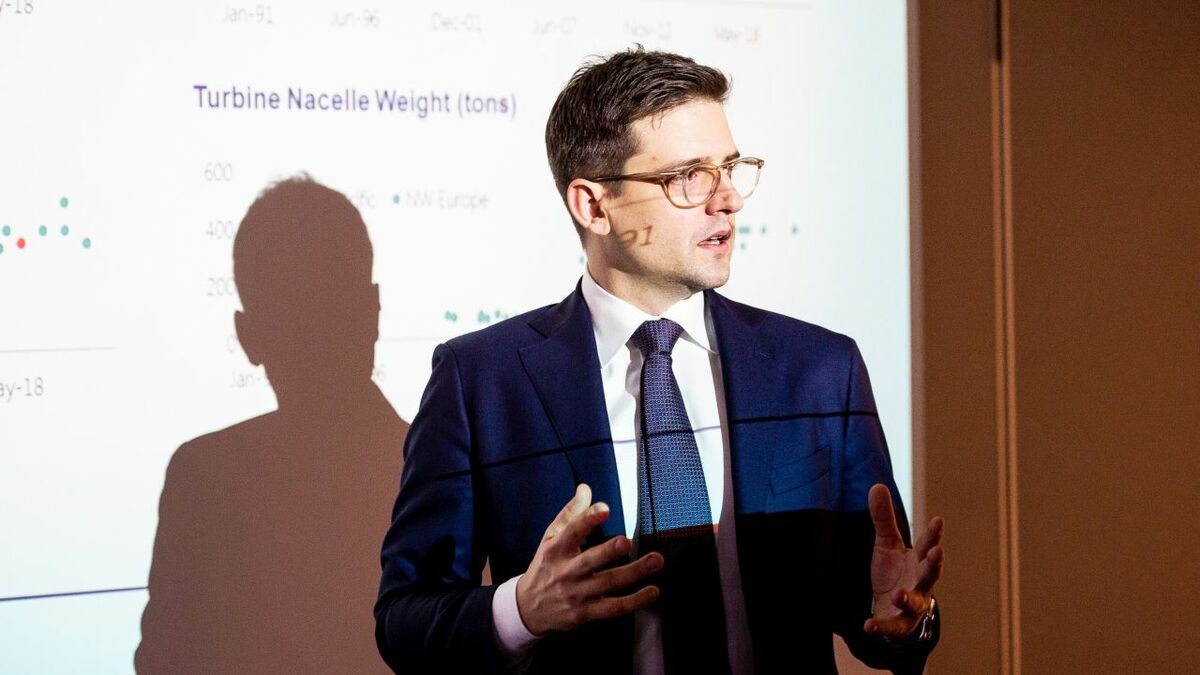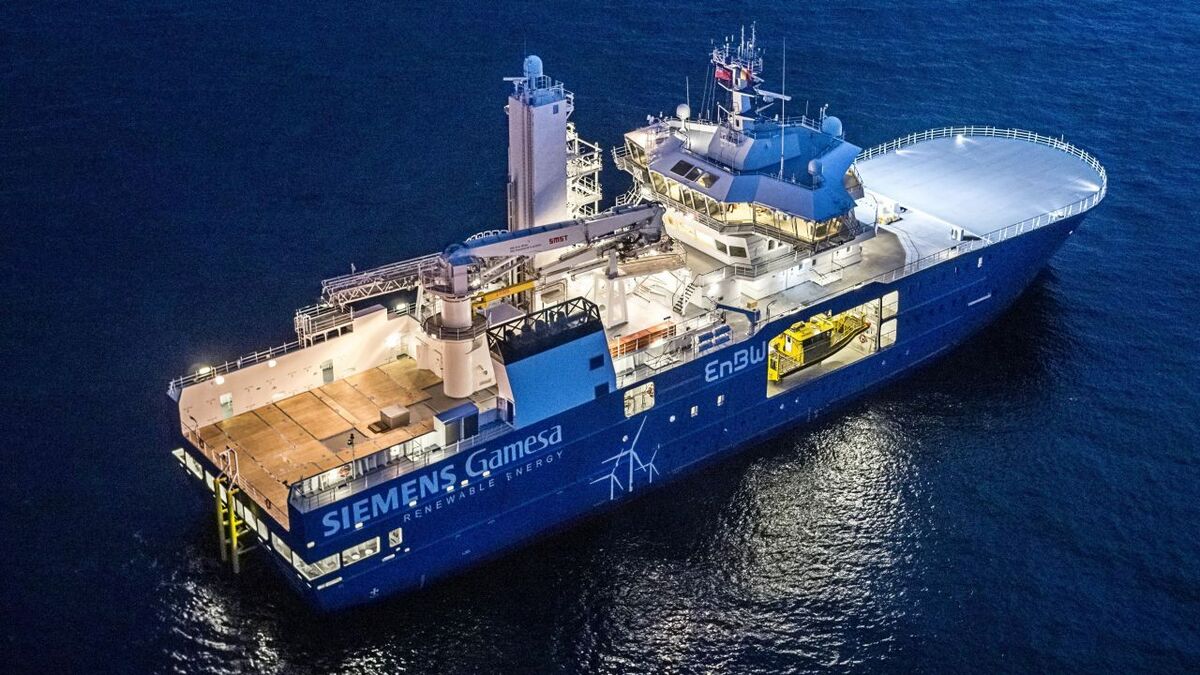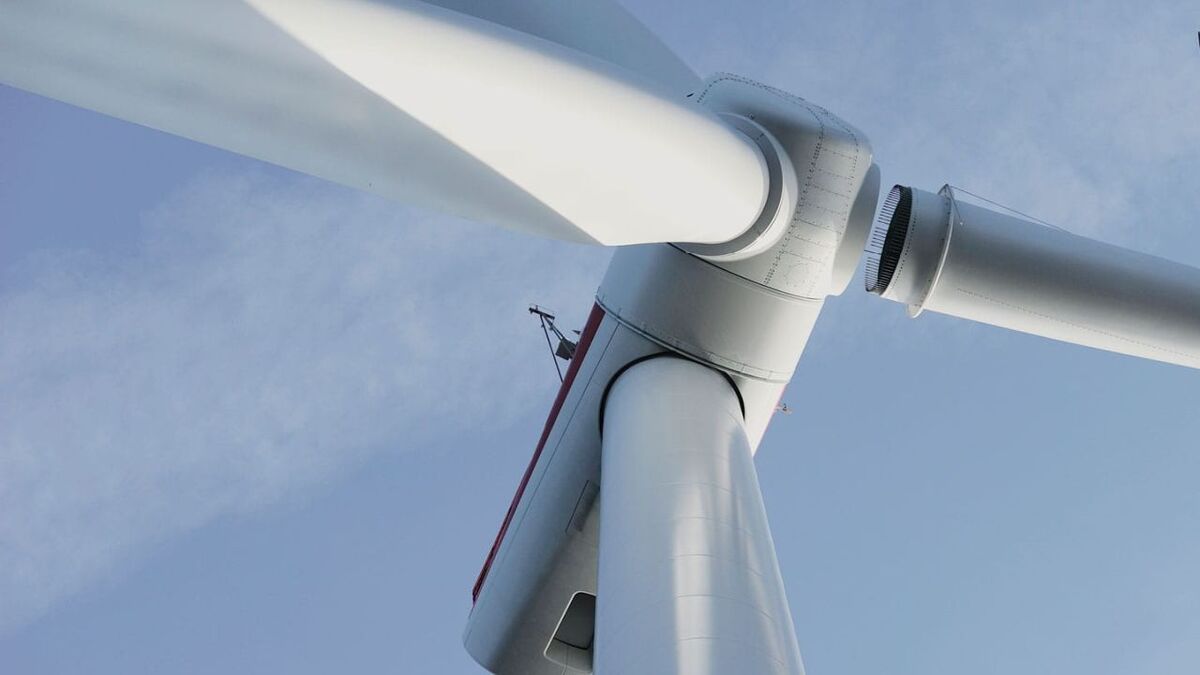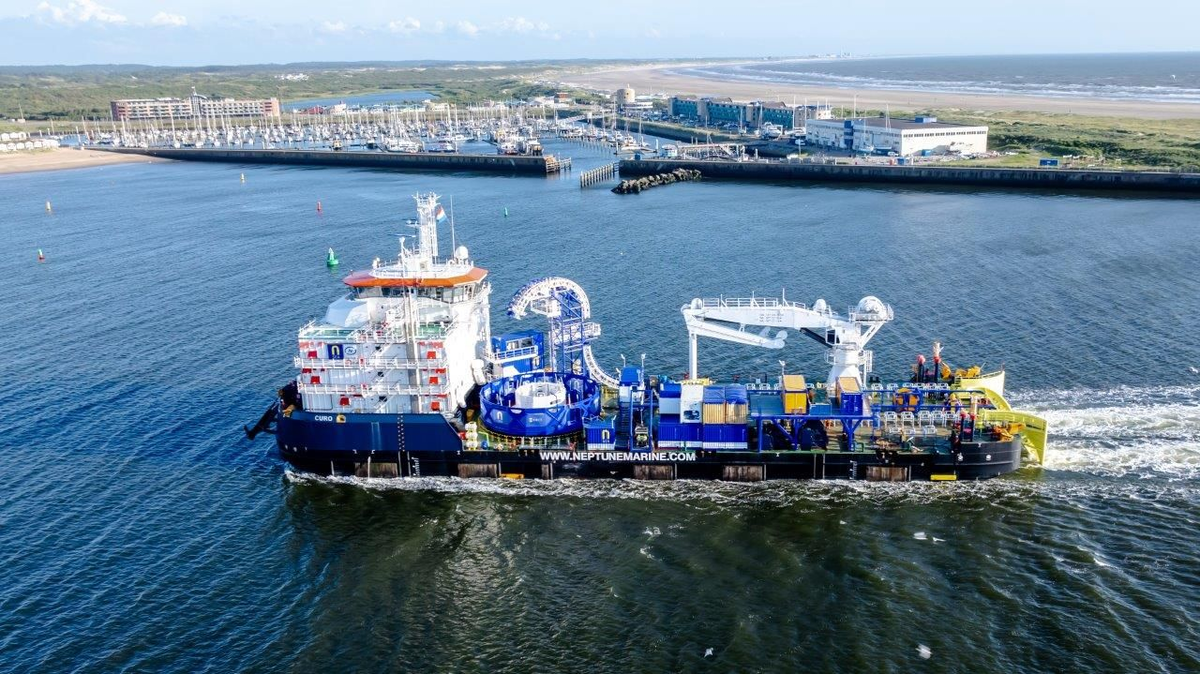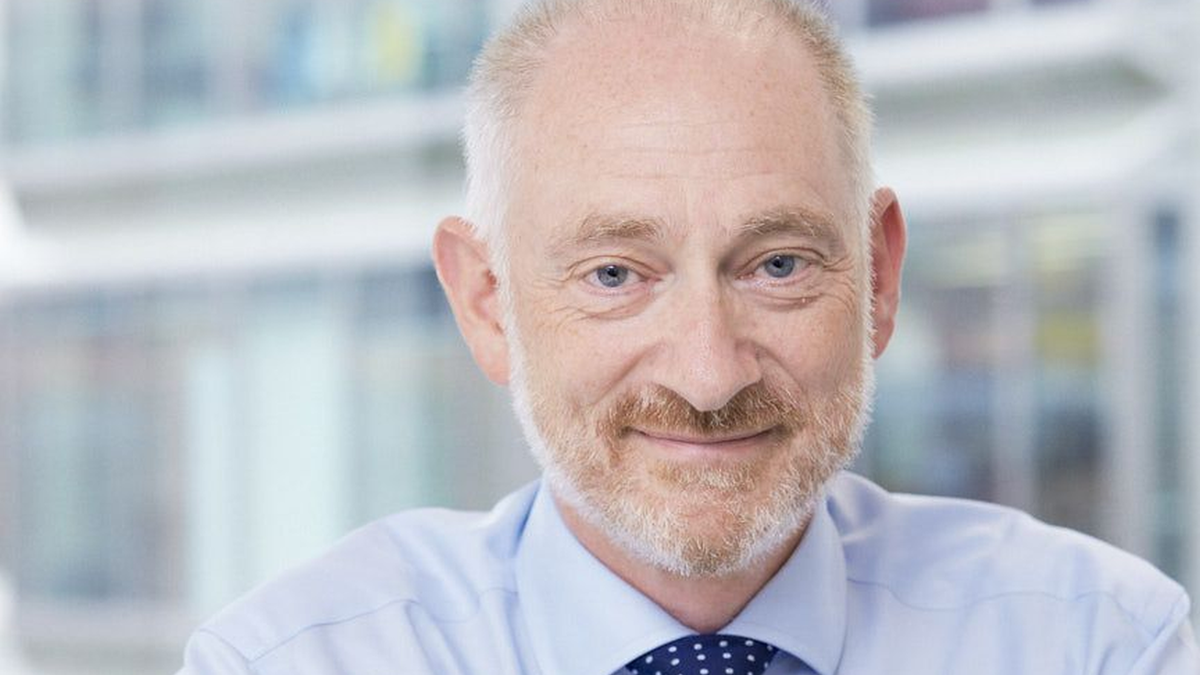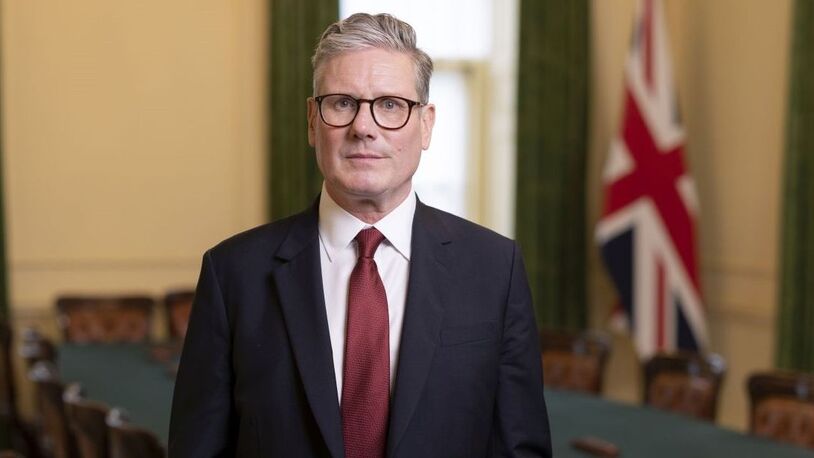Business Sectors
Events
Contents
Capacity commitments to drive fast growth in demand for offshore wind ships
New targets for offshore wind capacity in Europe, the US, Asia and elsewhere will make construction of new offshore installation vessels ‘essential’
The same targets will also drive demand for other offshore wind ships, including large numbers of service operation vessels (SOVs), the head of research at one of the world’s leading shipbrokers believes.
In an exclusive interview, Clarksons Platou Securities head of research Turner Holm told OWJ that the number of turbine installation vessels the market needs will double in the near future and that more could actually be needed. He believes the number of SOVs will have to increase even more quickly.
Mr Holm anticipates that well-known EPC companies will invest significantly in new installation vessels and that new players could enter the market such is the highly capital-intensive nature of constructing installation vessels, which cost in the order of US$250M each.
And apart from being able to transport and install massive new-generation turbines, the vessels owners build will need to be forward-looking and as environmentally friendly as possible, if they are to have long service lives and designs are not to be overtaken by marine environmental legislation and by developers’ desire to drive down emissions and eventually become carbon neutral. Ørsted – the world’s leading offshore wind developer – recently announced plans to become carbon neutral by 2025 and set a target of a ‘carbon neutral footprint’ by 2040, a plan that will see it engage with suppliers to reduce carbon emissions from the manufacture and installation of offshore wind.
Long-term targets could require huge numbers of vessels – on a scale comparable with the offshore oil and gas industry – but in the short-term, the question is, how will all the capacity due to be installed by 2030 enter operation without large numbers of offshore installation vessels, SOVs and crew transfer vessels quickly being built? Mr Holm has been crunching the numbers and believes he has some of the answers.
“To figure out how many ships you need, you need to look at the number of turbines, and if you look at 2019, fewer than 700 turbines were installed,” he told OWJ. “By 2024, based on projects that we know are going to take place, we’re looking at 1,400 turbines installed every year.
“That pace of installation will need to be maintained every year between 2024 and 2030 to reach 200 GW, which is our estimate of capacity by that time. As a result, we anticipate that the offshore wind industry is going to quickly need at least twice as many installation vessels as it has currently, possibly more.”
The ‘possibly more’ in the calculation is because much of the existing fleet of turbine installation vessels will be unable to handle new-generation, larger turbines. Some are being upgraded with new cranes and there have been one or two orders for new vessels, but those built to transport smaller turbines may not be able to handle sufficient units to remain competitive.
“We are undoubtedly going to need a lot of new jack-ups,” Mr Holm said. “How many turbines older vessels can transport is going be an issue, but so too are factors such as transit times between projects and actual installation rates.”
As offshore wind goes global, vessels will need to undertake lengthy transits between continents, which will reduce the aggregate rate of installation. That suggests regional capacity will become important, and steps have already been taken by Japanese owners to build vessels for the Asian market. A number of European vessels have already been assigned to projects outside the region, such as in Taiwan. In the US, utility Dominion Energy has announced plans to build an installation vessel for the American market. It is unlikely to be the only such vessel.
“If you talk to vessels owners, they sometimes cite installation rate of a turbine a day. But if you factor in the time it takes to jack-up and jack down again, you are talking about 1.5 days. If you also factor in the need to regularly return to base to pick up more turbines, the effective rate of installation falls to around three days,” Mr Holm explained. He agreed that foundation installation will increasingly be undertaken by floating vessels with dynamic positioning, which speeds up the process, but thinks jack-ups will remain the primary means of installing towers, nacelles and blades.
“Some existing vessels can carry a set of six 8-MW turbines, but not more than three 12-MW turbines, like GE Renewable Energy’s Haliade-X. That means more time spent in transit and less time actually installing turbines. You can look at other options, like feeder vessels, which might be essential in the US market for other reasons, but it is not an option that many owners or turbine manufacturers particularly like.”
The weight of nacelles for next-generation turbines is one of the biggest issues facing installation contractors. A March 2020 recent report from the National Renewable Energy Lab in the US, University of Maine and Technical University of Denmark characterised a 15-MW offshore wind turbine with a fixed-bottom monopile support structure that had a rotor diameter of 240 m, hub height of 150 m and a nacelle mass of around 1,000 tonnes. That kind of weight requires a vessel and crane capable of lifting significantly more than that. Lifting height and outreach are also key.
“We know the spec for the Haliade-X and Siemens Gamesa Renewable Energy’s new 14-MW turbines,” said Mr Holm. “The NREL study is a starting point for what might come next.
“Jack-up owners are very aware that unless they very carefully assess what they might before long need to install, they could invest in a new vessel that could be obsolete in five years. They need to look beyond existing wind turbine generators and anticipate what they might need to do later.”
But it isn’t only the number of installation ships that is going to need to grow. If anything, the number of SOVs is going to need to grow even more quickly.
“In the next four years, the number of SOVs the industry is going to need is going to double,” Mr Holm told OWJ. “Again, it is all about the number of turbines, but also how far offshore they are.
“If you assume that between 2024 and 2030, 1,400 turbines a year are going to be installed, excluding China, and around half of those are installed more than 50 km offshore – which takes CTVs out of the equation – we anticipate the market is going to need at least seven SOVs a year, every year, between 2023 and 2030. At the moment, there are 14-15 SOVs in service. Dogger Bank in the UK alone, for which Equinor and SSE recently initiated a tender process, will need four SOVs.”
Europe leading the way but other markets expanding quickly
The background to sharply increased demand for all types of offshore wind vessels – from survey vessels to cable-layers, installation ships, SOVs and crew transfer vessels (CTVs) – has seen the UK, the world’s leading offshore wind market, commit to construction of 40 GW of offshore wind, quadrupling current capacity.
The German Government wants to build 20 GW of offshore wind by the end of the decade and 40 GW by 2040 and could need even more offshore wind capacity if it is to produce sufficient renewable hydrogen to meet targets outlined in its new national hydrogen strategy.
France’s ambition to increase electricity production from renewable energy will make the country Europe’s fourth-largest offshore wind power producer in 2030, with 7.4 GW of capacity in operation. Around 8.75 GW of capacity will be made available through tenders from 2020 to 2028 as part of France’s plan to lift awarded capacity to 12.4 GW by 2028. Denmark has completed a screening process for 18 GW of new offshore wind capacity and wants to build two 2-GW energy islands, one of which could eventually have a capacity of 10 GW. The US is set to build 9 GW of offshore wind by 2030 and has a pipeline of offshore wind projects extending out to around 30 GW. Until late 2019, Taiwan’s stated offshore wind goal was 5.7 GW by 2025, but at the inauguration ceremony for Taiwan’s first commercial scale offshore windfarm – Formosa 1 – in November 2019, President Tsai Ing-wen unveiled a new, more ambitious long-term goal of another 10 GW of offshore wind by 2035. Japan plans to auction 1 GW of offshore wind every year between now and 2030.
The Global Wind Energy Council expects more than 50 GW of additional offshore wind capacity to be installed worldwide by 2024. A report from the Energy Industries Council in the UK forecasts operational capacity of 164 GW to 200 GW worldwide by 2030. In the longer term, European Commission scenarios foresee Europe having 230-450 GW of offshore wind by 2050, and The World Bank is looking at the potential for offshore wind in another 50 countries. In June 2020, the Ocean Renewable Energy Action Coalition unveiled a vision of 1,400 GW of offshore wind by 2050, an ambition that it claims is ‘entirely achievable.’
Riviera is hosting a week of free to attend 45-minute webinars focused on marine fuels commencing 29 June. Register your interest now
Related to this Story
Events
Maritime Environmental Protection Webinar Week
Cyber & Vessel Security Webinar Week
The illusion of safety: what we're getting wrong about crews, tech, and fatigue
Responsible Ship Recycling Forum 2025
© 2024 Riviera Maritime Media Ltd.


